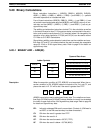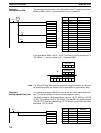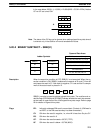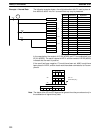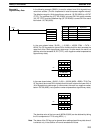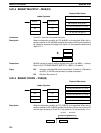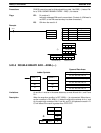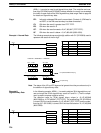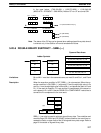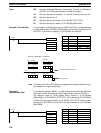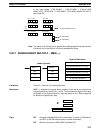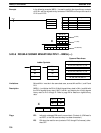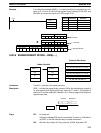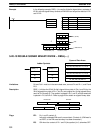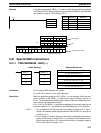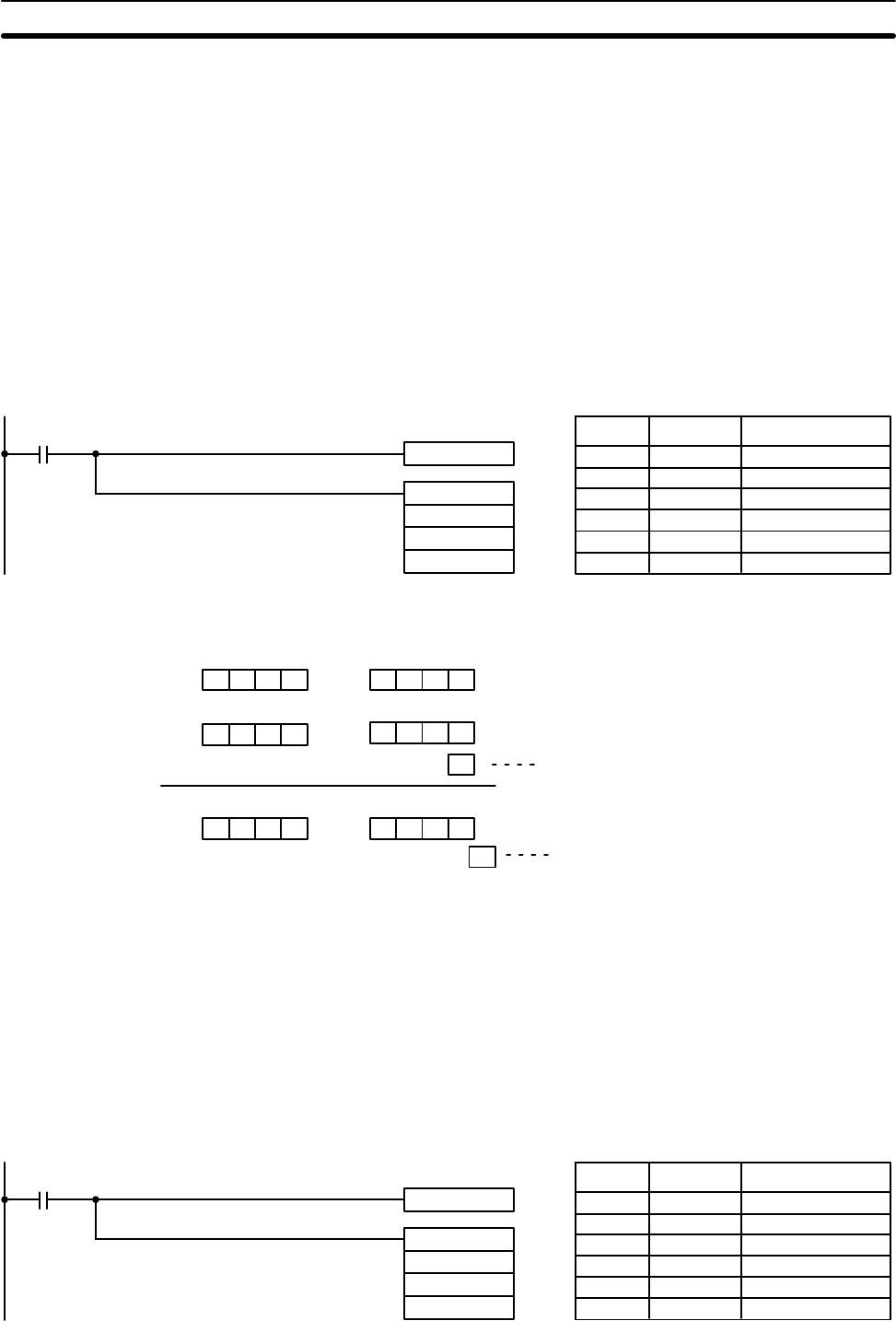
226
ADBL(––) can also be used to add signed binary data. The underflow and over-
flow flags (SR 25404 and SR 25405) indicate whether the result has exceeded
the lower or upper limits of the 32-bit signed binary data range. Refer to page 29
for details on signed binary data.
Flags ER: Indirectly addressed DM word is non-existent. (Content of :DM word is
not BCD, or the DM area boundary has been exceeded.)
CY: ON when the result is greater than FFFF FFFF.
EQ: ON when the result is 0.
OF: ON when the result exceeds +2,147,483,647 (7FFF FFFF).
UF: ON when the result is below –2,147,483,648 (8000 0000).
Example 1: Normal Data The following example shows an eight-digit addition with CY (SR 25504) used to
represent the status of the 9
th
digit.
CLC(41)
00000
ADBL(––)
000
DM 0020
LR 21
Address Instruction Operands
00000 LD 00000
00001 CLC(41)
00002 ADBL(––)
000
DM 0020
LR 21
14020187 + 00A3F8C5 = 14A5FA4C
Au + 1 : 001
Au : 000
Ad + 1 : DM 0021 Ad : DM 0020
1402 0187
00A3
F8C5
0
+
R + 1 : LR 22 R : LR 21
FA4C14A5
0
CY (Cleared with CLC(41))
CY (No carry)
Note The status of the UF and OF flags can be ignored since they are relevant only in
the addition of signed binary data.
In the following example, ADBL(––) is used to add two 32-bit signed binary val-
ues and output the 32-bit signed binary result to R and R+1. (The 2’s comple-
ment is used to express negative values).
The effective range for 32-bit signed binary values is –2,147,483,648
(8000 0000) to +2,147,483,647 (7FFF FFFF). The overflow flag (OF: SR 25404)
is turned ON if the result exceeds +2,147,483,647 (7FFF FFFF) and the under-
flow flag (UF: SR 25405) is turned ON if the result falls below –2,147,483,648
(8000 0000).
CLC(41)
00000
ADBL(––)
LR 20
DM 0010
DM 0020
Address Instruction Operands
00000 LD 00000
00001 CLC(41)
00002 ADBL(––)
LR 20
DM 0010
DM 0020
Example 2:
Signed Binary Data
Binary Calculations Section 5-20




